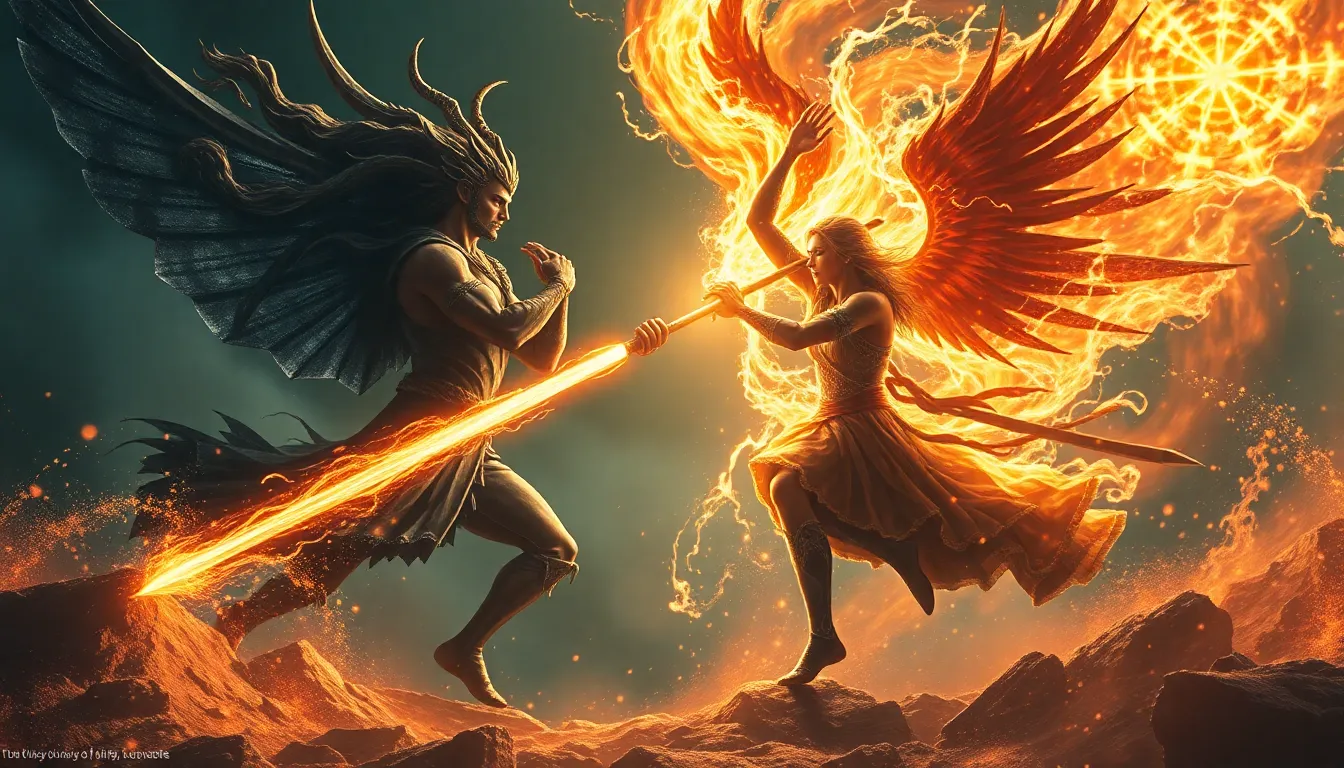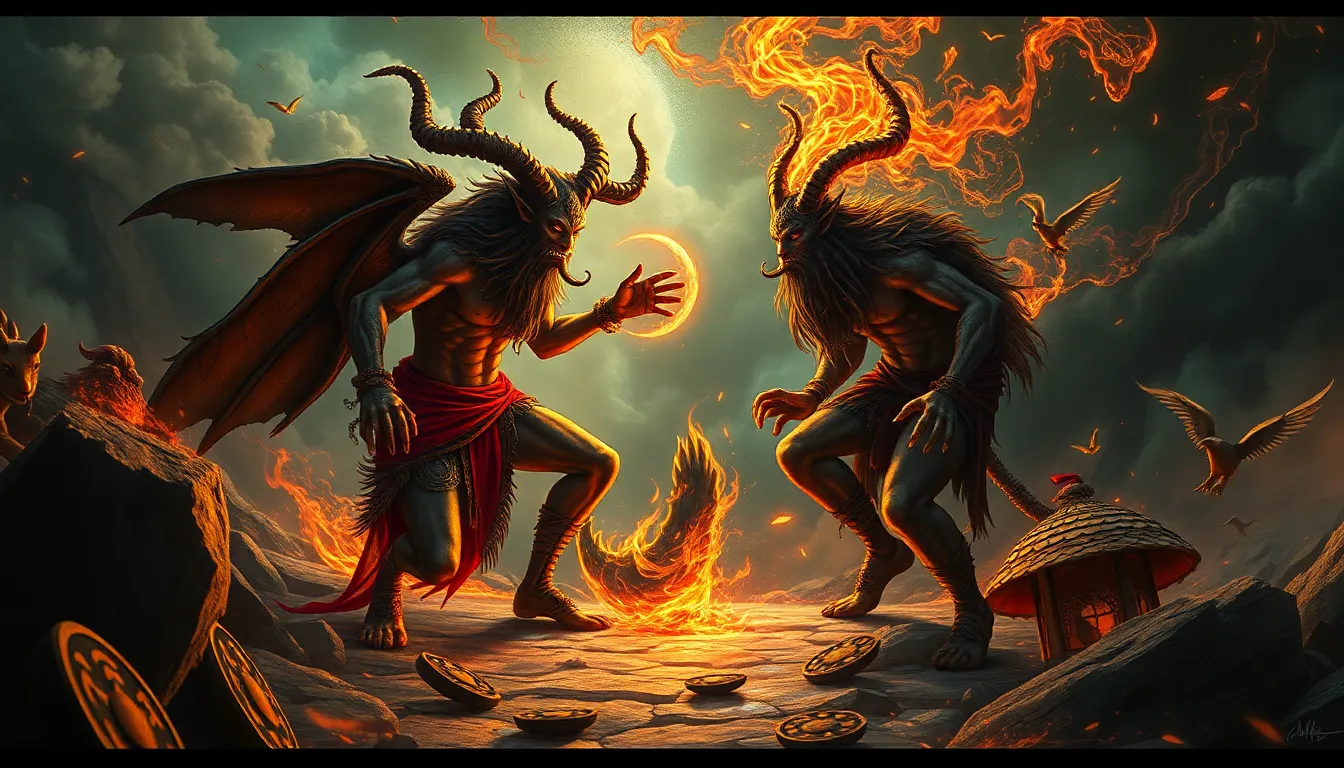The Role of Mythology in Our Understanding of the Apocalypse
I. Introduction
Mythology refers to the collection of myths and stories that cultures create to explain natural phenomena, human behaviors, and the mysteries of existence. These narratives are significant as they provide insight into the values, fears, and aspirations of a society. Among the myriad themes explored in mythology, the concept of the apocalypse stands out, representing both catastrophic endings and hopeful renewals.
Across various cultures, the apocalypse is depicted through diverse lenses—be it religious, philosophical, or existential. These narratives often serve as a reflection of societal anxieties and hopes for regeneration. This article aims to explore the multifaceted role of mythology in shaping our understanding of apocalyptic concepts, drawing upon historical contexts, key figures, and modern implications.
II. Historical Context of Apocalyptic Myths
The origins of apocalyptic narratives can be traced back to ancient civilizations, where cataclysmic events were often interpreted as divine interventions or cosmic cycles. These narratives served to explain the unexplainable—natural disasters, societal collapse, and personal crises.
- Origins in Ancient Civilizations: Many early cultures, such as the Mesopotamians and Egyptians, included stories of world destruction in their mythologies, often involving great floods or fiery ends.
- Western vs. Eastern Traditions: Western traditions, particularly from Judeo-Christian texts, emphasize a linear progression toward an end time, while Eastern philosophies, like Hinduism, may visualize cyclical patterns of creation and destruction.
- Evolution Through History: Over time, these apocalyptic themes have evolved, incorporating contemporary fears and societal changes, reflecting the cultural zeitgeist of each era.
III. Key Mythological Figures and Symbols in Apocalyptic Narratives
Central to apocalyptic myths are the figures and symbols that embody destruction and renewal. Deities and prophetic figures often play pivotal roles in these narratives.
- Deities and Divine Beings: Numerous myths feature gods who either instigate or mitigate apocalyptic events. For instance, in Norse mythology, the god Odin leads his followers in a final battle during Ragnarok.
- Symbolic Representations: Common symbols of destruction include fire, water, and darkness, often juxtaposed with symbols of renewal such as rebirth, light, and fertility.
- Prophetic Figures: Figures like the biblical prophets or the Vedic sages serve as messengers, warning humanity of impending doom or guiding them toward a new beginning.
IV. The Influence of Religion on Apocalyptic Myths
Religious texts often intertwine with mythology, creating rich narratives that shape apocalyptic expectations. The intersection of mythology and religion provides insight into how these concepts are interpreted.
- Religious Texts: Texts such as the Book of Revelation in Christianity and the Avesta in Zoroastrianism present vivid apocalyptic visions that have influenced countless interpretations.
- Shaping Expectations: Religious beliefs shape how communities perceive and respond to apocalyptic predictions, often creating a sense of urgency or hope.
- Case Studies: Christianity’s emphasis on the Second Coming, Hinduism’s cycles of creation and destruction, and Indigenous myths that resonate with environmental themes illustrate diverse interpretations of apocalypse.
V. Psychological Insights: Why We Create Apocalyptic Myths
The creation of apocalyptic myths can often be traced back to psychological needs. These narratives help individuals and societies process fears and uncertainties surrounding existence.
- Narratives of Destruction and Rebirth: They offer a framework for understanding life’s inevitable cyclical nature—endings that lead to new beginnings.
- Impact of Fear and Anxiety: Collective anxieties about societal collapse, environmental degradation, or personal failure can fuel the development of apocalyptic themes in mythology.
- Coping Mechanisms: Myths serve as tools for coping with existential crises, allowing societies to articulate fears and hopes in a structured narrative format.
VI. The Role of Mythology in Contemporary Apocalyptic Discourse
In modern times, ancient myths are reinterpreted to address pressing global issues, such as climate change and societal collapse. This resurgence of apocalyptic themes can be seen across various forms of media.
- Climate Change and Societal Collapse: Many contemporary narratives draw parallels between ancient myths and current environmental crises, urging societies to recognize the consequences of their actions.
- Popular Culture: Films, literature, and video games frequently explore apocalyptic themes, reflecting societal fears and the desire for redemption.
- Public Perception: Mythology shapes how communities respond to global crises, influencing activism and policy-making.
VII. Mythology as a Tool for Social and Political Commentary
Throughout history, apocalyptic myths have been used as powerful tools for social and political commentary. They often reflect the struggles and aspirations of communities.
- Influencing Social Movements: Movements that advocate for environmental justice often draw upon apocalyptic narratives to highlight the urgency of their causes.
- Political Rhetoric: Politicians and activists have utilized apocalyptic themes to galvanize support and prompt action, framing issues as dire and in need of immediate attention.
- Case Studies: Environmental movements, like those inspired by Indigenous mythologies, highlight the interconnectedness of humanity and nature and warn against ecological destruction.
VIII. Cross-Cultural Comparisons of Apocalyptic Myths
A comparative study of apocalyptic myths reveals both similarities and divergences across cultures, emphasizing the significance of cultural contexts in shaping these narratives.
- Similarities and Divergences: While many cultures share themes of destruction and renewal, the specifics—such as the nature of the apocalypse and what follows—can differ widely.
- Cultural Context: Each culture’s unique historical and social context informs its apocalyptic narratives, making them relevant to the specific challenges faced by those societies.
- Lessons Learned: Examining these myths cross-culturally can provide insights into universal human concerns and the different ways societies cope with existential threats.
IX. Future Implications of Mythology in Understanding the Apocalypse
As we look to the future, mythological narratives will continue to play an important role in addressing uncertainties. They provide frameworks for understanding the challenges that lie ahead.
- Relevance of Mythological Narratives: Myths can help societies navigate complex issues, offering hope through the cycles of destruction and rebirth.
- Addressing Future Uncertainties: The reinterpretation of ancient narratives may guide contemporary responses to crises, encouraging resilience and adaptability.
In conclusion, mythology serves as a vital lens through which we can explore the concept of the apocalypse. It encapsulates our fears, aspirations, and understanding of existence, providing both a mirror and a map for navigating the complexities of life and death.



